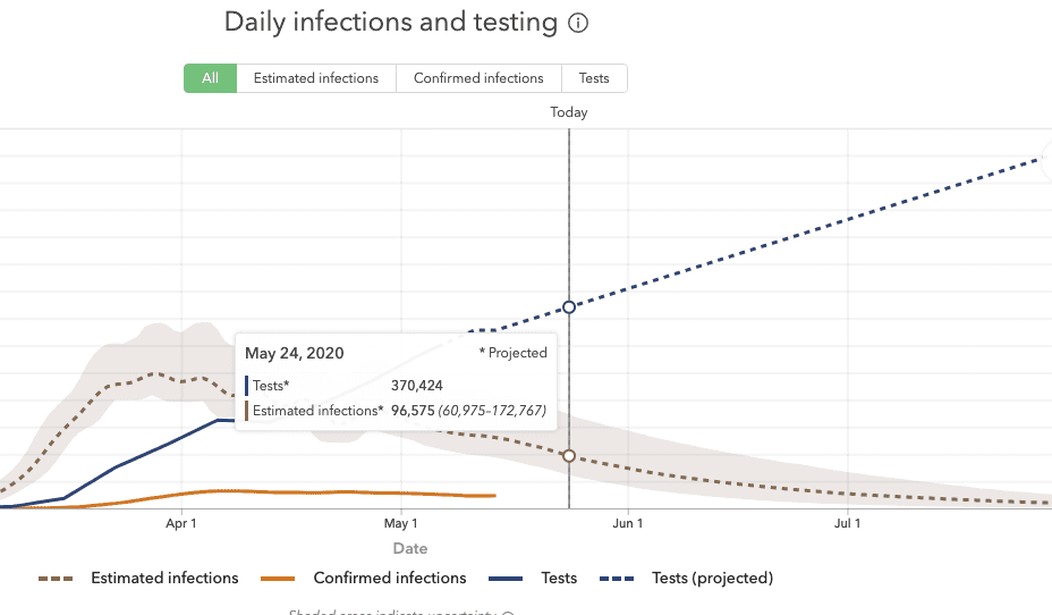The entire global economy fell victim to various COVID-19 models. As countries around the world went into severe lockdown based on astronomical mortality predictions from the Imperial College and the Institute for Health Metrics and Evaluation (IHME) at the University of Washington, economies tanked. As the president pointed out, the cure has the potential to be worse than the disease, and the life years lost to the lockdown response will not be known for years to come.
May I now present what is possibly the most ridiculous submission yet. From CNBC:
Fifty days of strict lockdowns followed by 30 days where measures are eased could be an effective strategy for reducing Covid-19 deaths while ensuring some level of economic protection, scientists claim.
In an EU-backed study published on Wednesday, a cohort of researchers from nine countries simulated how various lockdown strategies would impact the spread of the coronavirus.
“Some level of economic protection”? The U.S. had to pass an effective $6 trillion bill to provide about 45 days of solvency to businesses small and large. House Speaker Nancy Pelosi is proposing another $3 trillion in spending a mere two months after “15 Days to Slow the Spread” was announced. Yet the latest of the models is suggesting a near two-month lockdown several times a year.
If countries adopt this policy or one like it, get ready to live like citizens did in the Middle Ages. People who know how to grow, hunt, make, and build things will do fine. Urban areas, where knowledge economies dominate and such skills are frowned upon, will be in big trouble. Yet most often people who live in these areas are the ones championing continued lockdown based on models from “experts.” Wait ’til the Beyond Burger at their local Whole Foods in Manhattan disappears.
Of course, CNBC uses the scariest data to hype the latest entry into the Battle of Horrible, Very Bad Disease Models:
There have been almost 5 million cases of Covid-19 confirmed globally, with over 300,000 deaths from the virus worldwide, according to data compiled by Johns Hopkins University.
Technically true? Sure. However, it is still hardly informative. The CDC has put out revised mortality rates that are a fraction of the original models. The Johns Hopkins numbers also do not take into account the prevalence of testing or the accuracy of data. The university reports state figures from countries like China, Russia, and Iran whose numbers are surely higher than reported.
Coronavirus Isn’t Nearly as Deadly as We Thought. So Why Did the Lockdowns Happen in the First Place?
A responsible presentation of any COVID-19 related data that is recommending a policy prescription like lockdown should include the percent of positive tests and hospitalizations broken down by age and pre-existing conditions. At a minimum, include the link to Johns Hopkins data so readers can look at the COVID-19 experience in their own state and county to evaluate the necessity of the model in their local area.
Just like the Imperial College model, we are back to predictions of millions of dead people if we don’t lockdown:
They modeled several different scenarios on 16 countries, including Australia, Mexico, Belgium, South Africa and Nigeria.
In the first scenario, no mitigation or social-distancing measures were imposed. In every single country, this led to the number of patients requiring treatment in intensive care units (ICUs) quickly and significantly exceeding available capacity. Ultimately, this would result in 7.8 million deaths across the countries included in the analysis, researchers said, and the duration of the epidemic would be almost 200 days in the majority of those nations.
The panic porn rolls on. I have a simple question for the staff at CNBC. Why are we to believe this model when every single one of the models presented so far has been significantly revised? Additionally, there is no statistically significant correlation between lockdown and disease experience. In fact, the CDC supported findings in New York that transmission is most likely among members of a household or community living setting.
Epidemiological models, especially in the outbreak of a new illness like COVID-19, suffer from a few fatal flaws. Some, like the Imperial College Model, are built on bad code. The others are all weak because they use small amounts of data to make sweeping predictions over time. CDC Director Dr. Robert Redfield echoed comments made by Dr. Fauci and Dr. Birx during multiple press conferences:
“Models are only as good as their assumptions, obviously there are a lot of unknowns about the virus,” he said. “A model should never be used to assume that we have a number.”
We can predict the experience of things like heart disease and prostate cancer because we have decades of data accompanied by aggressive preventative testing systems for those diseases. These do not exist for COVID-19. They don’t really exist for most circulating viruses.
We have been dealing with influenza for over 100 years and the disease experience is calculated at the end of the season. The initial models for HIV were also severely flawed due to a lack of information. Why anyone thinks we can accurately predict the experience any nation will have with COVID-19 at this point is mind-boggling.
Ultimately, the approach being advocated by the president and the Coronavirus Task Force is probably our best bet. We need locally-driven, state-managed, and federally-supported testing and surveillance for COVID-19 with policy decisions being made based on real-time data, not models. Asserting there are global solutions to deal with COVID-19 on the local level is absurd.
Unless you are an Expert Scientist™ or a reporter looking for panic porn clicks.










Join the conversation as a VIP Member